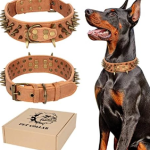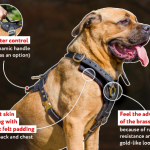Dog In Toy
Introduction Dog In Toy
Dog In Toy have been cherished companions to humans for centuries. They bring joy, companionship, and a lot of energy into our lives. One of the ways we enhance their lives and strengthen our bond with them is through play. Toys for dogs are not just a luxury but an essential component of their physical and mental well-being. This article delves into the myriad benefits of dog toys, explores the different types available, and provides guidance on selecting the best ones for your furry friend.
The Importance of Dog In Toy
Physical Exercise
Dogs are naturally active animals that require regular physical exercise to stay healthy. Toys play a crucial role in fulfilling their exercise needs, especially for those who may not have the opportunity to run freely in an open space. Engaging in play with toys helps dogs burn off excess energy, reducing the risk of obesity and associated health issues.
Mental Stimulation
Mental stimulation is as important as physical exercise for dogs. Toys that challenge a dog’s problem-solving abilities or require them to use their sense of smell or dexterity can keep their minds sharp and engaged. Puzzle toys, for example, can be particularly beneficial for intelligent breeds that need mental challenges to stay content.
Reducing Boredom and Anxiety
Boredom and anxiety are common issues in dogs, especially if they are left alone for long periods. Toys provide an outlet for their energy and curiosity, helping to alleviate feelings of boredom. Additionally, toys can serve as comfort objects that reduce separation anxiety, making it easier for dogs to cope when their owners are away.
Enhancing Bonding
Playing with your dog is an excellent way to strengthen your bond. Engaging in interactive play helps build trust and communication between you and your pet. Toys can facilitate these interactions, making playtime enjoyable and reinforcing positive behavior.
Types of Dog Toys
Dog toys come in a variety of shapes, sizes, and materials, each designed to serve different purposes. Here’s a breakdown of some popular types:
1. Chew Toys
Chew toys are designed to satisfy a dog’s natural instinct to chew. They help keep teeth clean and prevent boredom. Common materials include rubber, nylon, and rawhide. However, it’s crucial to choose chew toys that are safe and durable to prevent any potential choking hazards.
2. Fetch Toys
Fetch toys, such as balls and frisbees, are ideal for dogs that love to run and retrieve. These toys are great for exercise and can help improve your dog’s agility. Look for toys that are made of durable materials to withstand enthusiastic play.
3. Puzzle Toys
Puzzle toys are designed to stimulate a dog’s mind by challenging them to solve a problem to access a treat. These toys often involve hidden compartments or moving parts. They are particularly useful for intelligent breeds that need mental challenges to stay engaged.
4. Interactive Toys
Interactive toys often involve some level of engagement from both the dog and their owner. These toys can include tug-of-war ropes, treat-dispensing toys, and games that require both mental and physical effort. They are excellent for strengthening the bond between you and your dog.
5. Comfort Toys
Comfort toys are typically plush and serve as a source of comfort for dogs. They can be especially helpful for puppies or dogs that suffer from separation anxiety. Many comfort toys also double as chew toys, offering a soothing and engaging experience.
6. Teething Toys
For puppies going through the teething phase, teething toys are essential. They help soothe sore gums and promote healthy dental development. These toys are often made from soft, flexible materials that are gentle on a puppy’s teeth and gums.
How to Choose the Right Toy for Your Dog
Selecting the right toy for your dog involves considering several factors:
1. Size
Choose toys that are appropriate for your dog’s size. Toys that are too small can pose a choking hazard, while toys that are too large may be difficult for your dog to handle. Ensure the toy is sized appropriately to match your dog’s breed and age.
2. Durability
Consider your dog’s chewing habits when choosing a toy. If your dog is a heavy chewer, opt for toys made from durable materials like tough rubber or reinforced nylon. For dogs with lighter chewing habits, softer toys may suffice.
3. Safety
Safety should be a top priority when selecting dog toys. Avoid toys with small, removable parts that could be swallowed. Regularly inspect toys for signs of wear and tear, and replace them as needed to prevent any risk of injury.
4. Material
Different materials offer different benefits. Rubber toys are durable and can be great for chewers, while plush toys can provide comfort and companionship. Choose toys made from non-toxic materials to ensure your dog’s safety.
5. Purpose
Think about the purpose of the toy. Is it for fetching, chewing, mental stimulation, or comfort? Select toys that align with your dog’s needs and preferences. For example, if your dog enjoys solving puzzles, invest in interactive or puzzle toys.
FAQ Dog In Toy
1. What are the benefits of using interactive dog toys?
Interactive dog toys provide mental stimulation, promote physical activity, and encourage problem-solving. They help keep dogs engaged and can reduce boredom and anxiety. Interactive toys also offer opportunities for bonding between you and your dog.
2. How often should I replace my dog’s toys?
Toys should be regularly inspected for signs of wear and tear. Replace toys that are damaged or worn out to prevent any safety hazards. Generally, it’s a good idea to rotate toys to keep your dog interested and to replace them when they become unsafe.
3. Are there specific toys for puppies?
Yes, there are toys specifically designed for puppies. Teething toys are particularly important for puppies as they help soothe sore gums and promote healthy dental development. Soft, chewable toys are also beneficial for young dogs.
4. Can dog toys help with behavior issues?
Certain toys can help with behavior issues by providing mental and physical stimulation. For example, chew toys can help manage destructive chewing behavior, while puzzle toys can keep a dog occupied and reduce anxiety. However, addressing behavior issues often requires a combination of training and appropriate toys.
5. What materials are best for durable dog toys?
For durability, rubber and reinforced nylon are excellent choices. These materials are tough and can withstand heavy chewing. Avoid toys made from low-quality plastic or those with small parts that can be easily chewed off and swallowed.
6. How can I make playtime more engaging for my dog?
To make playtime more engaging, vary the types of toys you use and introduce new games. Interactive toys that involve both you and your dog can make playtime more enjoyable. Additionally, incorporating training exercises into play can provide both mental and physical stimulation.
Conclusion
Dog toys are more than just fun accessories; they are essential tools for maintaining your dog’s physical health, mental well-being, and emotional happiness. By selecting the right toys and incorporating play into your daily routine, you can enhance your dog’s quality of life and strengthen the bond you share. Whether it’s a sturdy chew toy, a challenging puzzle, or a comforting plush toy, there is a vast array of options to suit every dog’s needs and preferences. Investing time and thought into choosing the best toys for your canine companion will undoubtedly pay off in the form of a happier, healthier, and more content pet.






